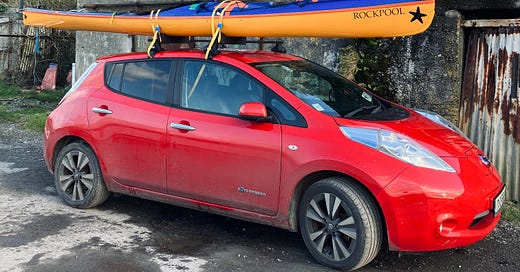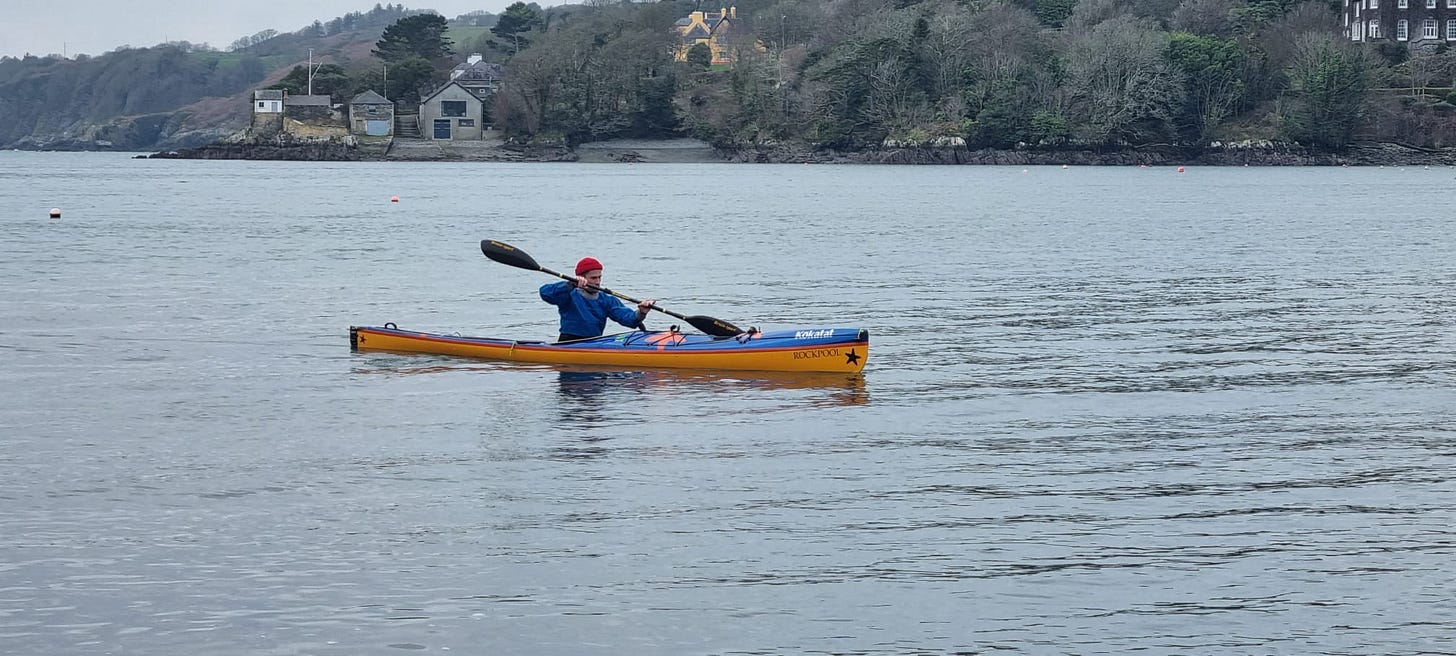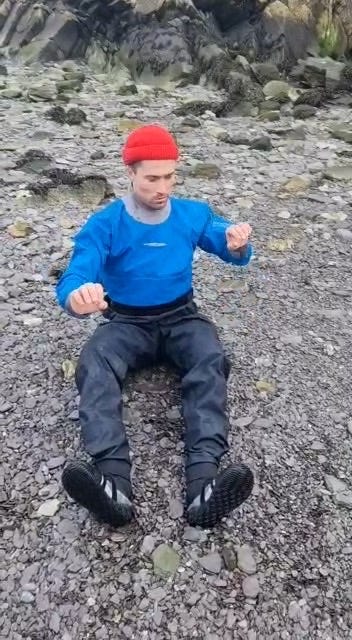“There is no perfect. Good enough is good enough.”
- Training for The New Alpinism
Paddling a kayak is easy until you try to think about it. That’s the paradox of working on technique: You have to break down your stroke if you want to improve it. Golfers, tennis players, and swimmers can relate...
The forward stroke is the work of a lifetime. There is no perfection, only progress. The more you learn, the more you can see room for improvement.
3,600 times an hour
At 60 strokes per minute, 3,600 strokes per hour, ten-to-twelve hours per day, I’ve got about a million strokes ahead of me on this trip. That means I’m repeating any mistakes a million times. Multiplying every inefficiency and strain by a million.
I don’t need a perfect forward stroke to get around Ireland——there’s no such thing. All I need is an efficient stroke I can maintain all-day, day after day, without injuring myself.
Luckily, I happen to live down the road from a master of efficient forward paddling. Jim Kennedy competed on the Irish National kayaking team, has been the Irish and British national sprint and marathon kayaking champion, and was the first Irish winner of the Devizes to Westminster 200K. He runs Atlantic Sea Kayaking, famous for its night kayaking tours.
When I told Jim about my upcoming trip, he offered to sponsor some 1-on-1 forward stroke coaching. Last weekend, we got to work.
Cringe playback
There’s nothing like slow-motion footage to show you the difference between what you think you’re doing and what you’re actually doing.
To kick off the coaching session, Jim asked me to paddle past him while he stood on shore filming with his phone. We then reviewed the 15 seconds of footage.
That short clip delivered some hard truths. I thought I was rotating my torso. It felt like I was rotating. But the playback showed that I was just twisting my shoulders and using my arms way too much without engaging my core or leg muscles. Paddling this way is exhausting and can lead to all sorts of injuries over time.
Note: In the image below, I’m practicing in waist-deep water under supervision. I’m not wearing a PFD to make my body rotation more visible to the camera. DON’T TRY THIS AT HOME. ALWAYS WEAR A PFD.
Seeing what I was doing wrong explained why I felt like my training had plateaued. I’ve been getting fitter, but the boat isn’t getting faster.
Based on the footage, Jim offered some feedback. Then he filmed me paddling past him again. And again.
“In one ear, out the other.”
With each replay, we highlighted areas of improvement and further corrections. It was a lot to take in. I found myself overthinking and almost forgetting how to paddle.
Jim encouraged me to go easy on myself and remember that we were cramming a two-day clinic into an afternoon. He told me to let all this new information “go in one ear and out the other.” When the session was over, my homework was to forget about everything we covered and just enjoy my training.
We’re working on unlearning a quarter century of thinking I know what I’m doing. The lesson needs time to sink in.
Judging by the dreams I’ve been having——catch, pull, recover, catch, pull, recover——I’d say it’s sinking in.
Thank you, Team Fox donors!
Thank you to everyone who donated to The Michael J. Fox Foundation for Parkinson’s Research this week:
Martha & Frank, Jacquelynn Allison, And Mandy Dietz.
Thank you to my buddy Nick Hanoian, who paddled on the U.S. Junior National team, for stroke feedback and understanding the pain of watching your own form.
Thanks for reading,
-Charlie
Thank you to Mike Jones for coaching and guidance.
Kokatat is the official gear sponsor of The Lap.
The lap will be fueled by Resilient Nutrition’s Long Range Fuel and bars.
Expedition coffee by 3fe.
CH Marine will be providing a VHF radio and other safety equipment.
Tent and cooking gas provided by Paddle & Pitch. Trolley by KCS.











